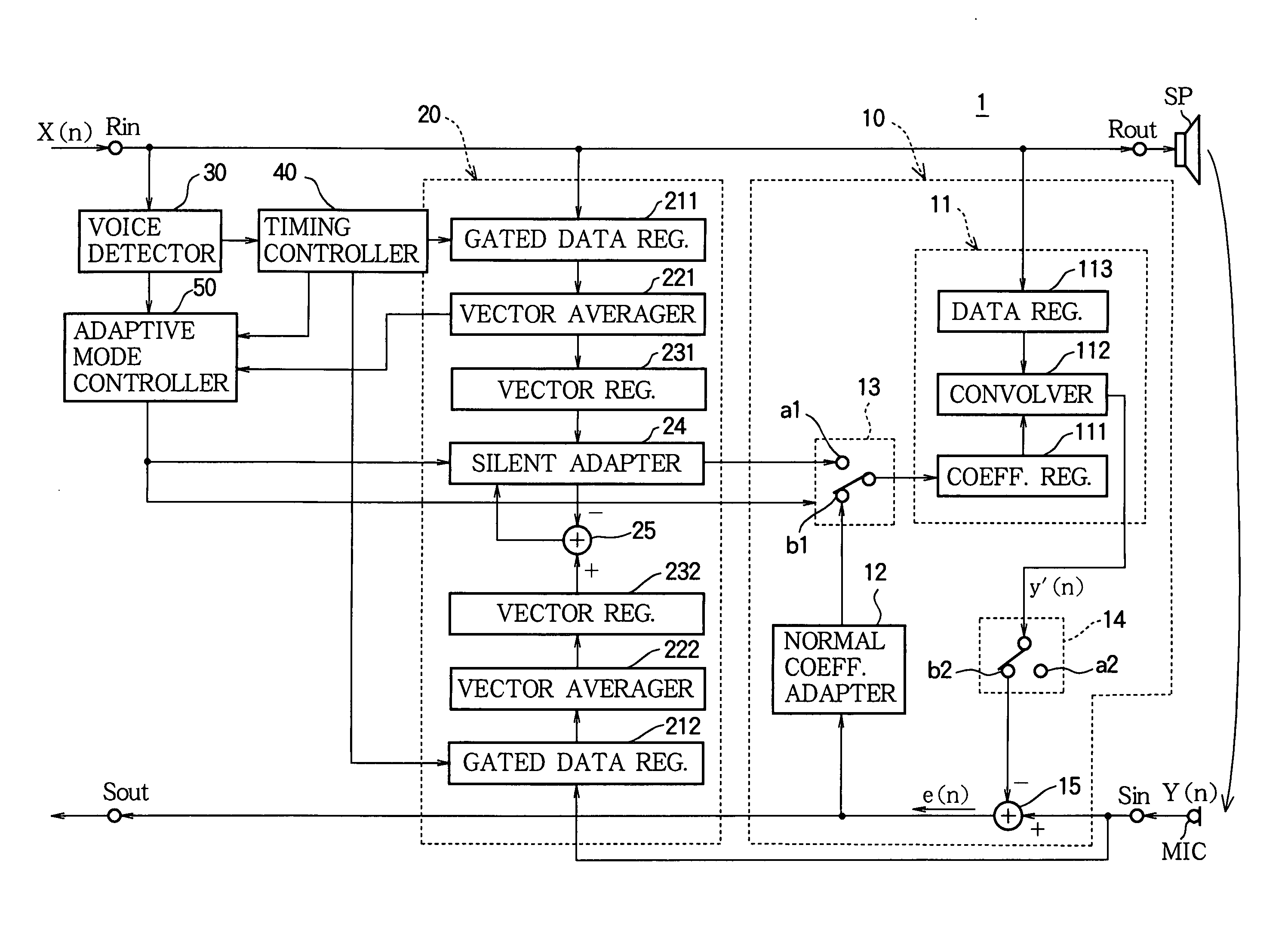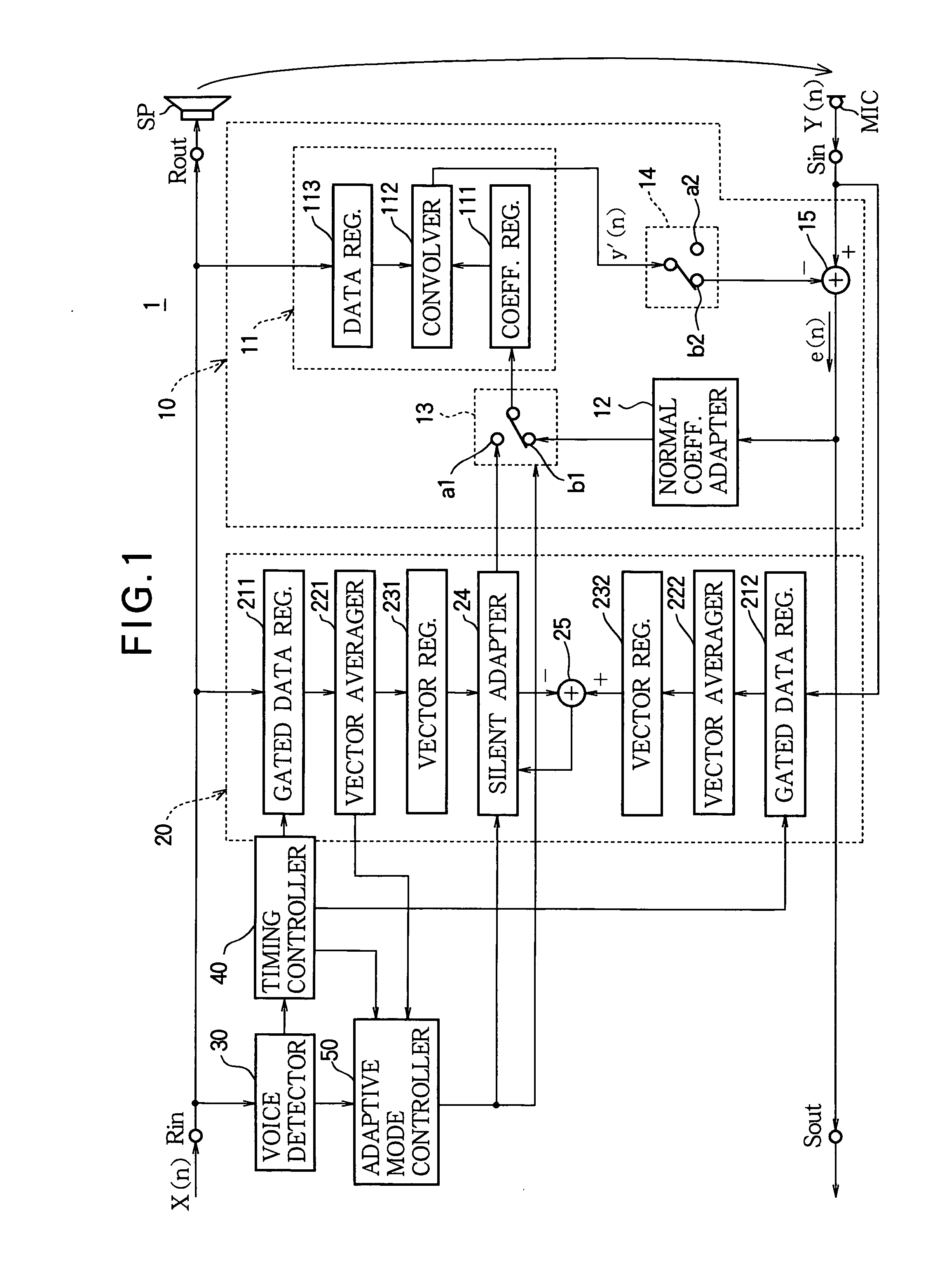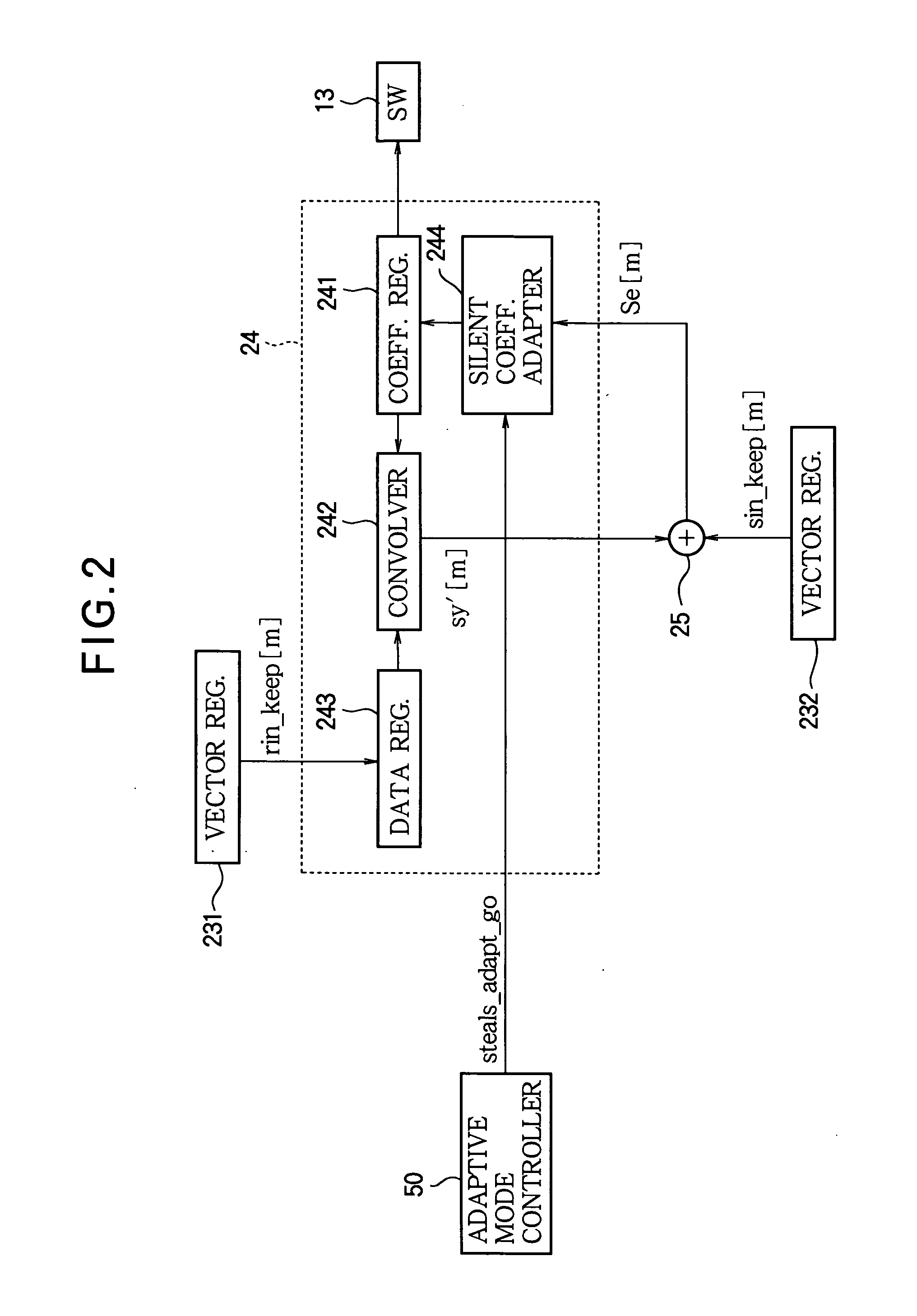Echo canceler and echo canceling program
a canceler and program technology, applied in the field of echo canceler and echo canceling program, can solve the problems of affecting the stability of the call, affecting the accuracy of the call, so as to achieve the effect of reducing the number of calls
- Summary
- Abstract
- Description
- Claims
- Application Information
AI Technical Summary
Benefits of technology
Problems solved by technology
Method used
Image
Examples
first embodiment
[0035]Referring to the block diagram in FIG. 1, a far-end input signal x(n) input by a far-end party (not shown) is routed via the receiving input terminal Rin and receiving output terminal Rout of the speakerphone to its speaker SP, from which an acoustic signal is output and heard by the near-end party (not shown). The acoustic signal is also picked up by the speakerphone's microphone MIC, and is routed toward the far-end party as an echo y(n) through a sending input terminal Sin and sending output terminal Sout. The echo canceler 1 has the function of removing or reducing this acoustic echo. If the speakerphone includes a two-wire / four-wire conversion circuit (also referred to as a hybrid circuit) that produces an electrical echo (referred to as a line echo), the echo canceler 1 may also be used to remove or reduce the line echo.
[0036]The echo canceler 1 includes a normal adaptive filter section 10, a silent adaptive filter section 20, a voice detector 30, a timing controller 40,...
second embodiment
[0117]Referring to the block diagram in FIG. 8, the echo canceler 1A in the second embodiment differs from the echo canceler 1 in the first embodiment in that the normal adaptive filter section 10A includes a modified coefficient register 111A, the silent adaptive filter section 20A includes a modified silent adapter 24A, and the normal adaptive filter section 10A includes a switch 16 disposed between the modified coefficient register 111A and silent adapter 24A. Under control of the adaptive mode controller 50, switch 16 connects coefficient register 111A to the silent adapter 24A or disconnects coefficient register 111A from the silent adapter 24A.
[0118]Referring to FIG. 9, the silent adapter 24A in the second embodiment differs from the silent adapter 24 (FIG. 2) in the first embodiment in that the coefficient register 241A is connected to switch 16. When switch 16 is closed, coefficient register 241A receives a new coefficient vector from the normal adaptive filter section 10A.
[...
third embodiment
[0129]Referring to FIG. 10, the echo canceler 1B in the third embodiment differs from the echo canceler 1 (FIG. 1) in the first embodiment in that the silent adaptive filter section 20B includes modified gated data registers 211B, 212B and modified vector averagers 221B, 222B.
[0130]The gated data registers 211B, 212B in the third embodiment differ from the first embodiment in that they store only one data vector apiece. The vector averagers 221B, 222B in the third embodiment differ from the vector averagers 221, 222 in the first embodiment in that they calculate a weighted average, more precisely an exponential moving average.
[0131]Next, the operation of the echo canceler 1B in the third embodiment will be described.
[0132]As in the preceding embodiments, the data vector X(n) received at time n is expressed by the following equation (17).
X(n)=[x(n), x(n−1), . . . , x(n−N+1)]t (17)
[0133]If K0, K1, . . . , Kn, . . . are successive timings at which the timing signal is asserted (keep_f...
PUM
 Login to View More
Login to View More Abstract
Description
Claims
Application Information
 Login to View More
Login to View More - R&D
- Intellectual Property
- Life Sciences
- Materials
- Tech Scout
- Unparalleled Data Quality
- Higher Quality Content
- 60% Fewer Hallucinations
Browse by: Latest US Patents, China's latest patents, Technical Efficacy Thesaurus, Application Domain, Technology Topic, Popular Technical Reports.
© 2025 PatSnap. All rights reserved.Legal|Privacy policy|Modern Slavery Act Transparency Statement|Sitemap|About US| Contact US: help@patsnap.com



